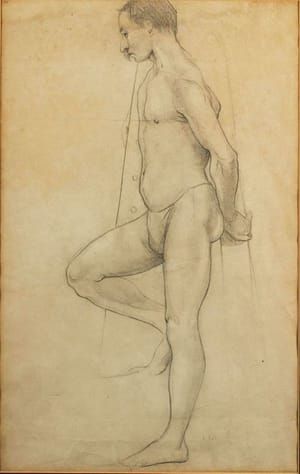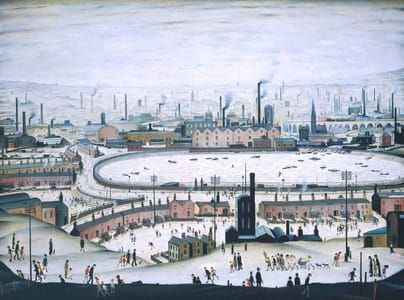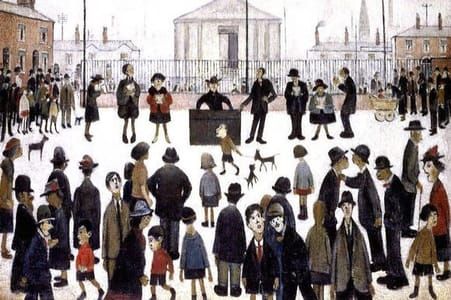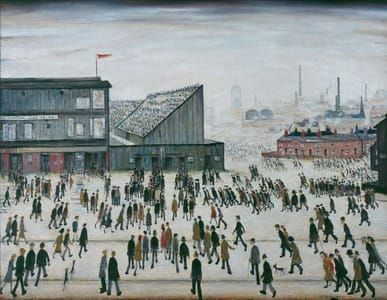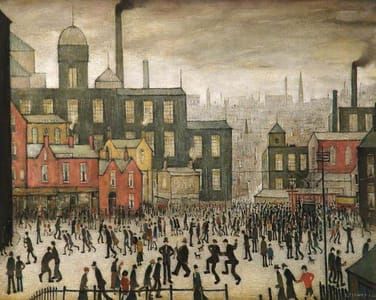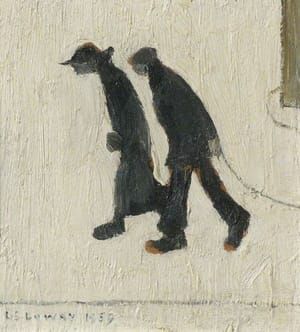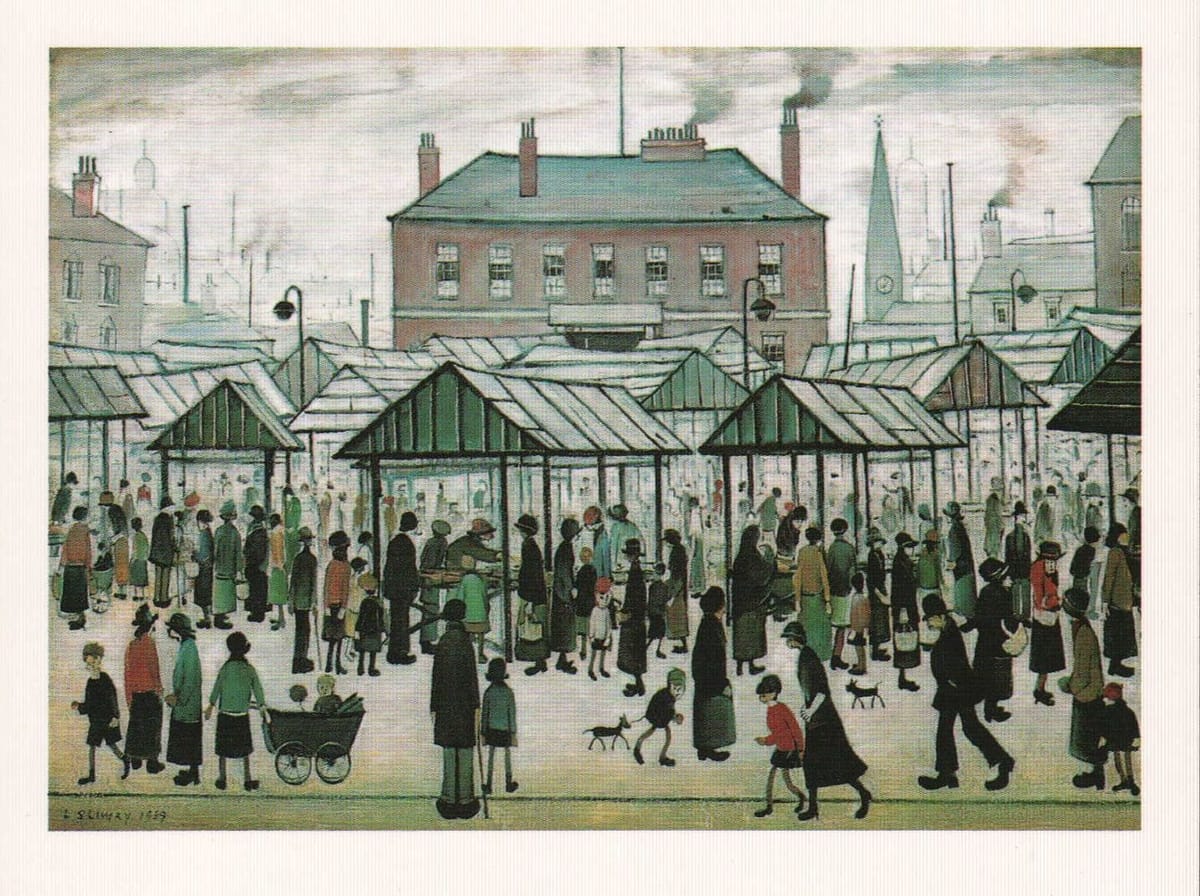

Market Scene, Northern Town, 1939
L.S. Lowry
L.S. Lowry, Dalrymple explains,
ploughed his own artistic field for years, decades, before he achieved recognition: and when such recognition came, it did not change his simple mode of life. He had a day job until his retirement at the age of 65 of a most unromantic and unartistic kind: he worked as a rent-collector for a property company in the days when tenants of tiny workers’ houses paid their rent weekly and in cash. He painted between collecting rents.
Lowry saw
in the bleak townscapes of the Industrial Revolution, and in the inhabitants of those townscapes, a subject worthy of artistic representation, as nobody had before: finding a beauty in them without in the least prettifying them, or without resort to sentimentality.
The Tate Gallery had a fine collection of Lowry’s work, but
for long refused to display any of it, mainly from a kind of snobbery. Lowry was utterly a provincial, he was allied to and...
[https://theodoredalrymple.wordpress.com/category/art/]
© 1939 L.S. Lowry
L.S. Lowry
artistArthur
coming soon
